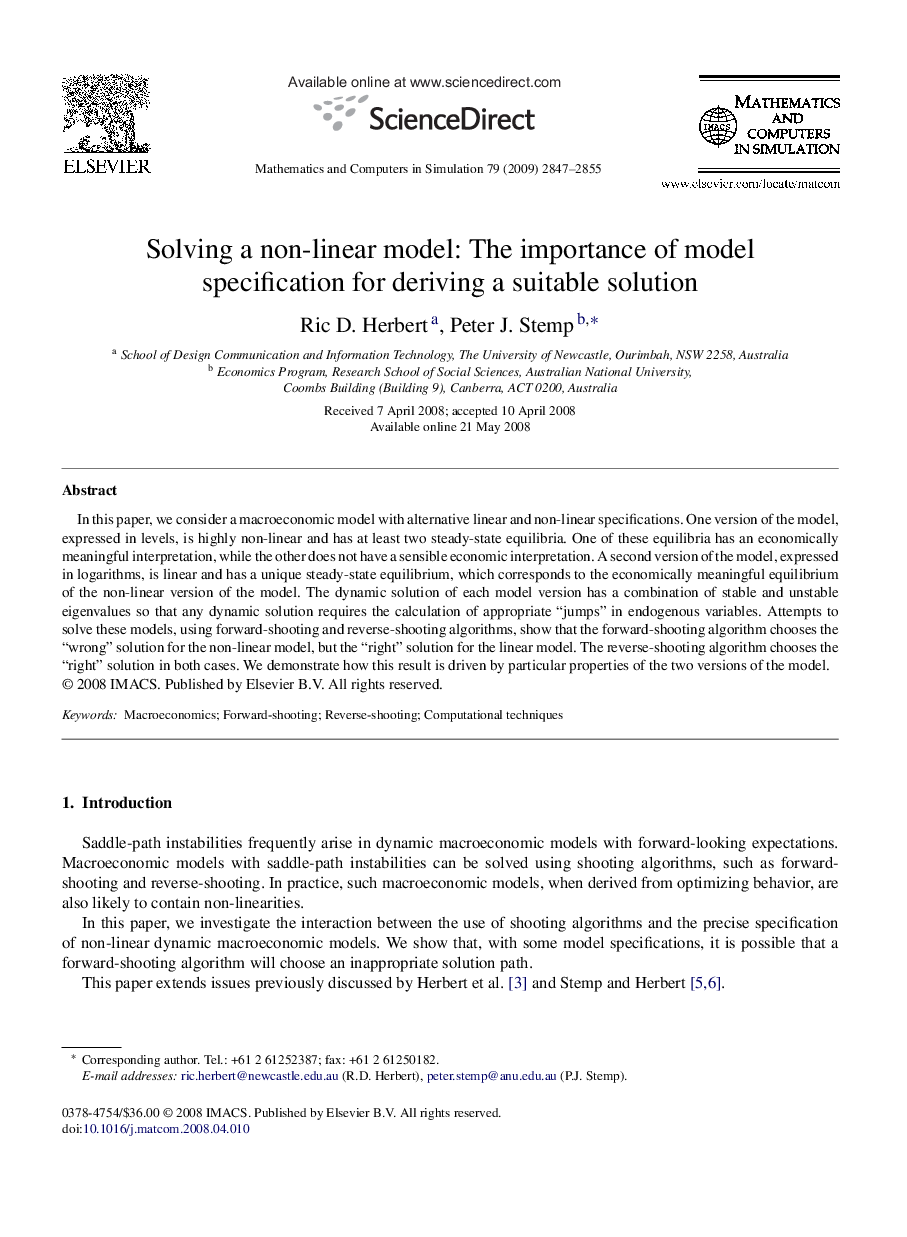| Article ID | Journal | Published Year | Pages | File Type |
|---|---|---|---|---|
| 1141118 | Mathematics and Computers in Simulation | 2009 | 9 Pages |
Abstract
In this paper, we consider a macroeconomic model with alternative linear and non-linear specifications. One version of the model, expressed in levels, is highly non-linear and has at least two steady-state equilibria. One of these equilibria has an economically meaningful interpretation, while the other does not have a sensible economic interpretation. A second version of the model, expressed in logarithms, is linear and has a unique steady-state equilibrium, which corresponds to the economically meaningful equilibrium of the non-linear version of the model. The dynamic solution of each model version has a combination of stable and unstable eigenvalues so that any dynamic solution requires the calculation of appropriate “jumps” in endogenous variables. Attempts to solve these models, using forward-shooting and reverse-shooting algorithms, show that the forward-shooting algorithm chooses the “wrong” solution for the non-linear model, but the “right” solution for the linear model. The reverse-shooting algorithm chooses the “right” solution in both cases. We demonstrate how this result is driven by particular properties of the two versions of the model.
Related Topics
Physical Sciences and Engineering
Engineering
Control and Systems Engineering
Authors
Ric D. Herbert, Peter J. Stemp,
